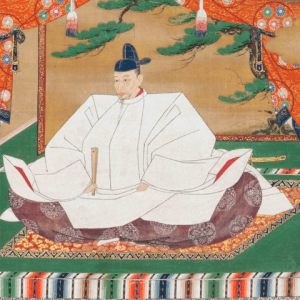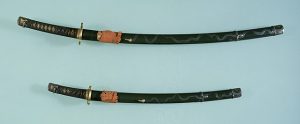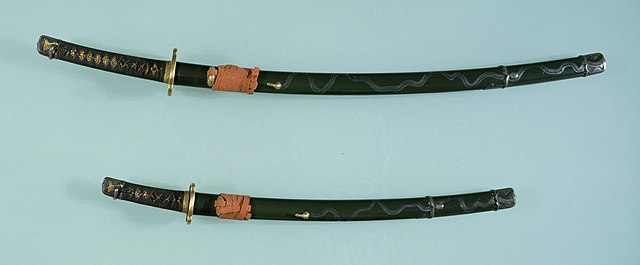Common-Sense Weapons Confiscation
Japanese Sword Hunt
In 1588 Japan was coming through a period of instability and infighting. It was common practice in Japan at that time that all people would be allowed to carry swords and other arms at their own discretion. This misguided policy could only bring harm to the people.
A new young emperor had been named and his regent (appointed governor) was Toyotomi Hideyoshi. Hideyoshi knew that to maintain a mostly peaceful realm and ensure the safety of the people of Japan, some common-sense imperial orders would have to be enforced. Uprisings by peasants the year prior and threats from the unnecessarily heavily armed sohei (warrior monks), made confiscating all weapons a natural step to ensure domestic tranquility.

Toyotomi Hideyoshi
Hideyoshi determined that he could supersede the rule of law and mandate that all weapons be removed from common peasants. He issued this edict on August 29, 1588. It was natural that nobles (samurai and daimyo) could maintain weapons and ensure the safety of the commoners, so he allowed them to retain their swords. But not so for the “peasants who keep needless weapons, do not pay taxes and plot risings against landlords”.
To garner cooperation from peasants who may not realize that they didn’t need weapons, Hideyoshi promised to build a great statue of Buddha with the metal of confiscated weapons for a new temple in Kyoto.
What followed became known as the Taiko Sword Hunt. Armies of the Empire went door to door to every home in Japan, confiscating swords, knives, and guns. The sword hunt was a great success. With enemies of the state disarmed, Imperial power was solidified to unite and pacify Japan. Common people could no longer speak out against the benevolent government. It also allowed Hideyoshi to subjugate a Christian population that was growing at a rapid rate and always causing problems. Christianity was later outlawed by the state on penalty of death.


200 years later the new United States Constitution ensured the rights of the people to be armed could not be banned by an executive edict. Unfortunately, the Constitution prevented common-sense weapon control edicts that could better ensure the safety of the people.
If you go to Japan today, you cannot see the statue of Buddha made from the confiscated weapons at the temple in Kyoto. It was never completed.
In 1588, the kampaku of Japan, Toyotomi Hideyoshi, issued the following decree:
Farmers of all provinces are strictly forbidden to have in their possession any swords, short swords, bows, spears, firearms, or other types of weapons. If unnecessary implements of war are kept, the collection of annual rent (nengu) may become more difficult, and without provocation, uprisings can be fomented. Therefore, those who perpetrate improper acts against samurai who receive a grant of land (kyunin) must be brought to trial and punished. However, in that event, their wet and dry fields will remain unattended, and the samurai will lose their rights (chigyo) to the yields from the fields. Therefore, the heads of the provinces, the samurai who receive a grant of land, and deputies must collect all the weapons described above and submit them to Hideyoshi’s government.
The swords and short swords collected in the above manner will not be wasted. They will be used as rivets and bolts in the construction of the Great Image of Buddha. In this way, farmers will benefit not only in this life but also in the lives to come.
If farmers possess only agricultural implements and devote themselves exclusively to cultivating the fields, they and their descendants will prosper. This compassionate concern for the well‑being of the farms is the reason for the issuance of this edict, and such a concern is the foundation for the peace and security of the country and the joy and happiness of all the people… Sixteenth year of Tensho [1588], seventh month, 8th day.
Thanks for reading The Ops Desk!











